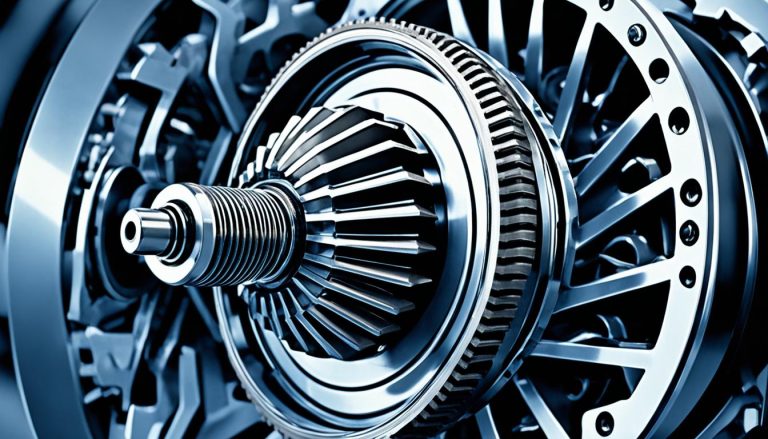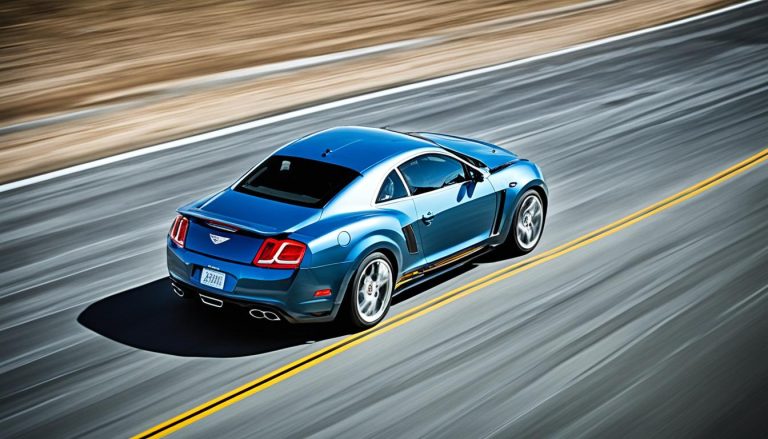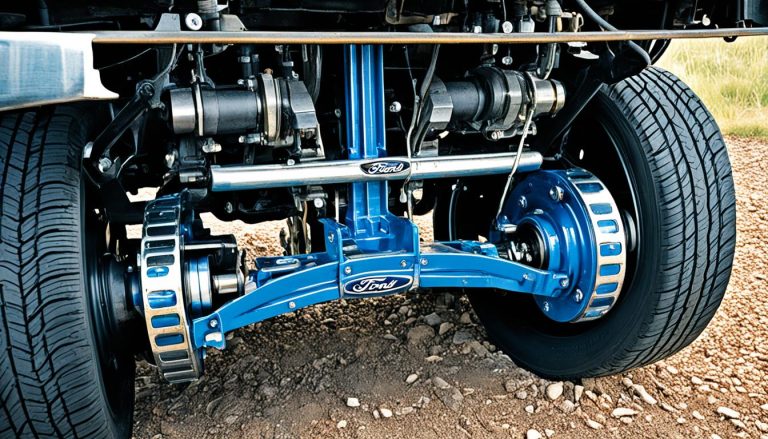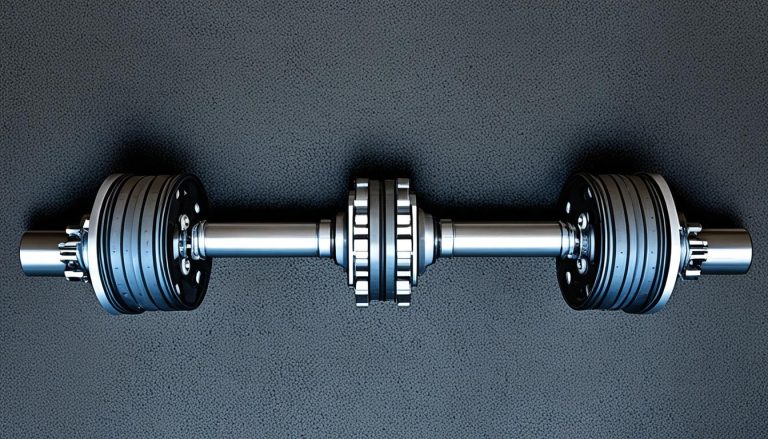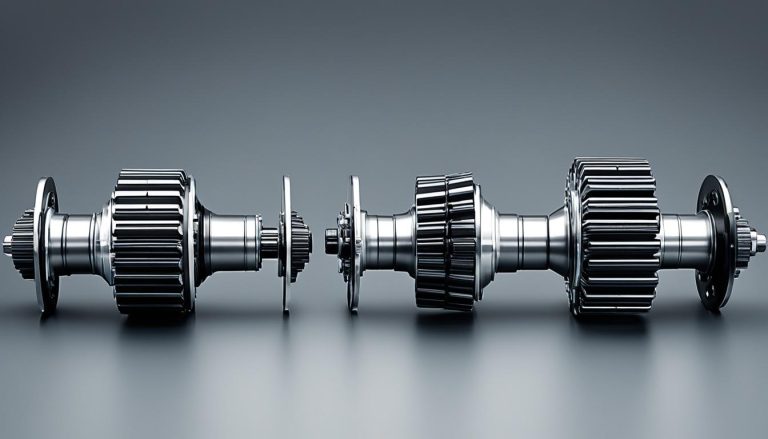Posi Trac Rear End vs Limited Slip: Key Differences
When it’s time to get a grip on the road, your car’s differential plays a pivotal role in vehicle performance. You’ve likely heard terms like posi trac rear end and limited slip differential, but do you truly grasp how these mechanisms enhance your driving experience? Understanding the nuances between different types of rear end traction systems is crucial, especially if improved traction is a high priority for you.
Whether you’re accelerating out of a tight corner or pushing your vehicle through inclement weather, both Posi Trac and Limited Slip Differentials aim to provide you with the stability and control you need. As we delve into the heart of vehicle dynamics, you’ll discover that these advancements in traction technology are more than just automotive buzzwords. They’re the unsung heroes that keep you safely hugging the road, no matter where your journey takes you.
Key Takeaways
- The Posi Trac rear end is General Motors’ proprietary term for their limited slip differential, improving wheel synchronization.
- Limited Slip Differentials grant variable wheel speeds for enhanced cornering and traction in diverse conditions.
- Both systems are designed to augment vehicle performance by optimizing power distribution and grip.
- Understanding the difference between differential types can be the key to choosing the right one for your vehicle.
- The technology behind rear end traction has evolved significantly, offering drivers improved control and safety.
- Key to better handling – knowing the ins and outs of your car’s differential can fundamentally change your driving experience.
Understanding the Basics: Posi Trac Rear End vs Limited Slip
When diving into the world of automotive enhancements, particularly those that deal with wheel dynamics and vehicle control, comprehending the function and nuances of the rear end differential is crucial. This component is more than just a piece of mechanical wizardry; it’s the cornerstone of power distribution for your vehicle’s wheels.
What is a Rear End Differential?
A rear end differential lies at the heart of your vehicle’s drivetrain, deftly managing wheel speed during a turn. Why does this matter? In essence, it allows each wheel to rotate independently, preventing unnecessary strain and enhancing vehicle control. This is especially important for maintaining stability as you navigate through bends and turns on your driving adventures.
Defining Posi Trac and Limited Slip Differentials
The terms “Posi Trac” and “limited slip differential” may appear to be two distinct concepts, but in reality, there’s a nuanced relationship between them. With a Posi Trac — a term trademarked by General Motors — you’re dealing with a type of limited slip differential designed to heighten rear end traction. Functionally identical to its LSD counterparts, Posi Trac ensures power is effectively transferred to the wheel with ample grip, thus mitigating wheel slip scenarios.
Common Misconceptions and Terminology Clarifications
There’s often confusion surrounding the categorization of differentials. While Posi Trac is a brand-specific version of the limited slip differential, not all LSDs are Posi Tracs. Also, it’s important to differentiate these systems from lockers and spools, which lock the wheels together, ensuring they turn in unison — a feature not shared by standard LSDs.
In the following differential comparison table, you’ll find a clear distinction between Posi Trac and limited slip differentials to help clarify any lingering misconceptions.
| Feature | Posi Trac (GM Specific) | Limited Slip Differential (General) |
|---|---|---|
| Wheel Speed Management | Equalizes to provide better grip | Adjusts based on traction needs |
| Vehicle Control during Traction Loss | Improves control through torque transfer | Provides more torque to the wheel with grip |
| Power Distribution | Even distribution under normal conditions | Dynamic distribution as required |
| Common Misconceptions | Is an LSD, but not all LSDs are Posi Trac | Oftentimes mistaken for Posi Trac |
Understanding these key features enhances your grasp of how these systems contribute to your vehicle’s performance, and ensures you’re informed when discussing posi trac vs limited slip benefits. Recognizing the differences could have a profound impact on your vehicle’s maneuverability and traction capabilities.
The Mechanics of Traction: How Different Differentials Work
Understanding the inner workings of differential types is pivotal when you’re aiming for improved traction and precise wheel spin management. Differentials are the unsung heroes of your vehicle, carefully distributing power from the engine to your wheels, ensuring stability and efficiency during each drive.
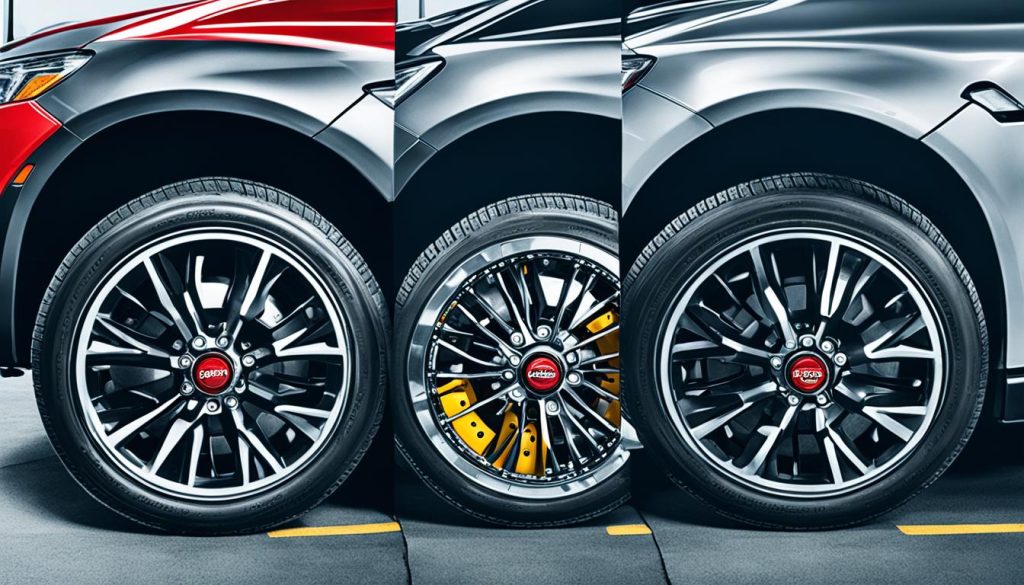
Take for instance the clutch-type limited slip differential (LSD), such as the renowned Yukon Dura Grip. It leverages a series of clutches and springs to control torque flow, essentially allocating power to the wheel that requires it the most. Meanwhile, the gear-type LSD, with examples like the Spartan Helical LSD, uses an intricate setup of helical worm gears to manage torque distribution, adapting responsively based on each wheel’s traction scenario. While their designs may vary, both operate on the fundamental could principle of optimizing torque delivery to facilitate better handling and enhanced safety.
| Differential Type | Mechanical Design | Function |
|---|---|---|
| Clutch-Type LSD (Yukon Dura Grip) | Clutches and springs | Torque distribution management between wheels |
| Gear-Type LSD (Spartan Helical) | Helical worm gears | Dynamic torque adjustment based on traction |
Regardless of which style of differential your vehicle uses, the ultimate goal is perpetual: to maintain grip when the terrain or your dynamic driving demands it. As you explore these differential types, remember that your choice can significantly influence your driving experience – whether it’s a smooth cruise or an adrenaline-fueled adventure.
Historical Development: From Posi Trac to Modern LSDs
The story of the posi trac system is a testament to the auto industry evolution and its relentless pursuit of enhancing vehicle performance. As you delve deeper into the historical development of differentials, you’ll discover the pivotal role of General Motors and its iconic PosiTraction. Let’s take a moment to reflect on how these mechanisms transformed over the years, influencing both the functionality of vehicles and the market’s approach to naming these crucial components.
The Evolution of the Posi Trac System
Introduced in the late 1950s by General Motors, the posi trac system quickly became a foundational technology for improving traction and handling. This innovation led to a significant milestone in differential comparison, showcasing the posi trac benefits that set new standards in the automotive industry. Over the decades, manufacturers have iterated and optimized these systems, with brands like Mopar’s Sure-Grip and Ford’s Traction-Lok joining the fore.

Shift from Nomenclature to Functionality in Auto Industry
In the early days, catchy names like Posi Trac resonated with consumers, linking brand identity with vehicular prowess. However, as the quest for advanced vehicle performance intensified, a shift occurred. The fascination with labels subsided as functionality and performance took center stage. Even though “Posi Trac” symbolized a certain era of GM’s innovation, today, differentials are primarily recognized for their technical merits rather than their brand names, echoing the auto industry evolution.
| Differential Type | Brand | Introduced | Key Features |
|---|---|---|---|
| Positraction (Posi Trac) | General Motors | Late 1950s | Both wheels rotate at same speed; increased traction |
| Sure-Grip | Mopar (Chrysler) | 1960s | Improved power transfer; limited slip functionality |
| Traction-Lok | Ford | 1970s | Better traction in slippery conditions; smoother operation |
| Truetrac | Eaton Corporation | Modern Era | Helical gears; no wearable parts; suited for high-performance |
As we reflect on the historical development of these critical components, it’s clear that the posi trac benefits have been instrumental in driving forward the industry. The remarkable evolution from the Posi Trac of yesteryears to the sophisticated limited slip differentials (LSDs) of today showcases the enduring legacy and transformation within the realm of vehicle performance and traction solutions.
The Impact on Driving Experience
When vehicle handling and rear end traction are improved, the driving experience is elevated to new heights. With the implementation of Posi Trac or other limited slip differentials (LSDs), you gain the assurance of enhanced traction that adapts to your vehicle’s needs on-the-fly—whether you’re mastering sharp turns or navigating undulating terrain.
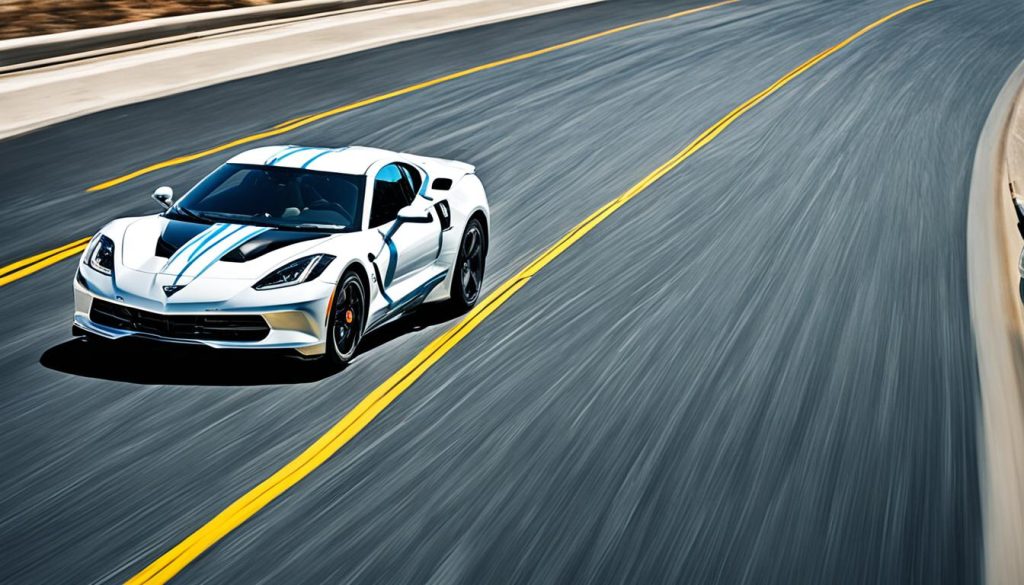
The seamless integration of these advanced traction systems means that wheel slip is significantly minimized, leading to a driving experience that feels both grounded and invigorating. Imagine the wheels of your vehicle maintaining their grip as you accelerate out of a corner, each tire maintaining optimal contact with the road surface. This is the tangible benefit of a Posi Trac rear end, turning treacherous roads into tracks where your confidence can flourish.
- Enhanced rear end traction during all types of accelerations
- Marked improvement in vehicle handling in diverse driving conditions
- Increased driving confidence, especially under strenuous driving scenarios
Ultimately, the decision between a conventional open differential, a Posi Trac solution, or another type of LSD can have a consequential impact on how you experience your vehicle. This single choice influences how a vehicle behaves in critical moments, from leisurely drives on city streets to the demanding duress of off-road adventures. Select wisely, as the differential you choose can redefine your entire command over the vehicle.
Benefits and Drawbacks of Posi Trac vs Limited Slip
When exploring the battle of posi trac vs limited slip differential, it’s essential to consider how these technologies impact your driving experience. Each has unique posi trac benefits and differential benefits, offering enhanced traction to maintain control on slippery surfaces, yet they come with distinct considerations of tire wear and differential maintenance. Let’s delve into these aspects to understand how they could influence your vehicle’s performance considerations and behavior in adverse conditions performance.
Advantages of Enhanced Traction
Both posi trac and limited slip differentials ingeniously distribute power amongst the wheels. This design significantly mitigates the risks associated with tire spinouts, ensuring enhanced traction during acceleration and maneuvering. This technology is particularly beneficial under adverse conditions, making it a crucial feature for those who frequently encounter challenging weather or terrain.
Considerations for Tire Wear and Maintenance
Despite the traction control advantages, it’s prudent to stay mindful of tire wear that can occur due to the variable torque being applied to each wheel. Hence, regular tire rotation becomes more critical to maintain even tire wear. Differential maintenance can also be more demanding—specific components within the differential may require attention over time, primarily due to their intricate nature.
Performance in Adverse Conditions
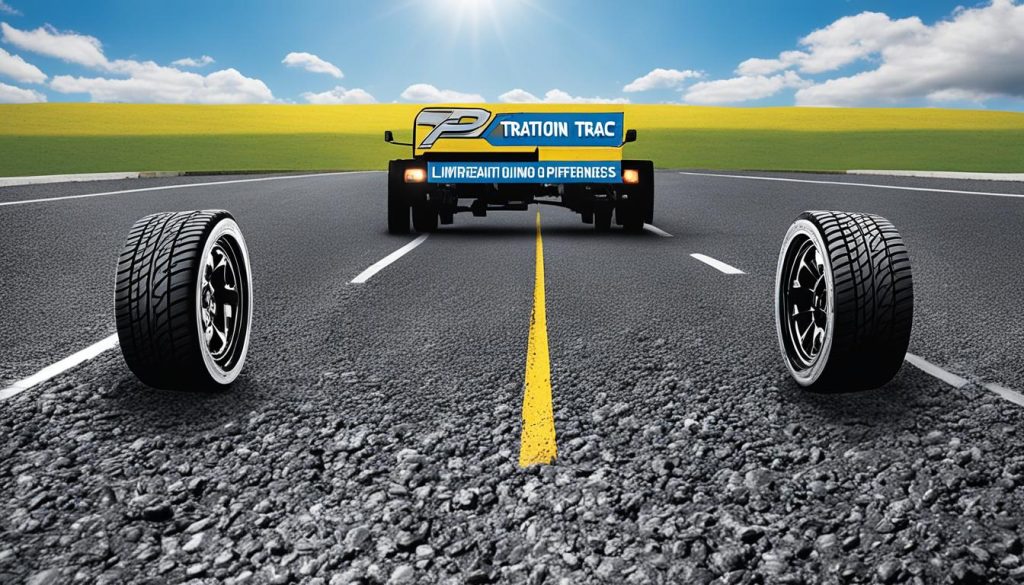
In scenarios where traction is compromised—like snow, rain, or gravel—the performance considerations of your vehicle can be greatly enhanced by a posi trac or limited slip differential. By automatically redirecting the engine’s torque to the wheel with the most grip, these systems dramatically improve your car’s stability and your confidence behind the wheel.
| Feature | Posi Trac | Limited Slip Differential |
|---|---|---|
| Enhanced Traction | Yes | Yes |
| Tire Wear | Uneven wear, requires monitoring | Uneven wear, requires monitoring |
| Maintenance | Higher due to complexity | Varies by design |
| Performance in Adverse Conditions | Improved | Improved |
| Traction Control | Optimal for GM vehicles | Applies to wider range of vehicles |
Choosing the Right Differential for Your Vehicle
Embarking on selecting a differential, you must weigh your specific driving scenarios and performances against the multitude of options available. Whether you battle the unpredictable grip of wet roads or cruise the unpredictable terrain that demands performance tuning, integrating a posi trac rear end or limited slip differential (LSD) could be a transformative upgrade to your vehicle’s capabilities. They are essential components that refine handling and extensively boost safety, cornerstones to performance enthusiasts and safety-conscious drivers alike.
The intricacies between a posi trac system and other LSDs are nuanced, with each variety bringing its blend of mechanism, maintenance necessities, and cost implications to the forefront. As you delve into the complex world of vehicle performance tuning, realize that beyond the technical enhancements lies a spectrum of considerations – from the ongoing care to the durability of the components, and of course, the feasibility aligned with your budget. Knowledge is power in the realm of choosing differentials, and informed decisions pivot on understanding both the striking benefits and the practical trade-offs.
Invention and innovation in the automotive domain have always been about advancing safety, control, and excitement. Your journey to refining your ride with the appropriate differential echoes this progression. Equipped with insights into how differentials like the posi trac rear end and LSDs enrich vehicle performance, you stand ready to make a choice that promises to elevate your driving experience to match your distinct driving desires and conditions. The right differential is not just about the brand or type; it’s about the seamless fusion of technology and tangible, on-road improvements it delivers to you, the driver.
FAQ
What is the key difference between a Posi Trac rear end and a limited slip differential?
Both Posi Trac rear end and limited slip differentials serve to improve traction, but Posi Trac is a specific brand name used by General Motors for their version of a limited slip differential, which is a general term for differentials that distribute torque to the wheel with more grip.
How does a rear end differential enhance vehicle control?
A rear end differential allows the wheels to rotate at different speeds, which is vital for turning corners smoothly and maintaining control of the vehicle.
Are Posi Trac and limited slip differentials the same?
Conceptually, yes. Posi Trac is a type of limited slip differential, though the term Posi Trac specifically refers to General Motors’ trademarked version of an LSD.
What common misconceptions exist about Posi Trac and limited slip differentials?
One common misconception is that all limited slip differentials are called Posi Trac, which is not true since Posi Trac is a GM-specific term. Additionally, lockers and spools are different types of differentials and should not be confused with LSDs.
Can you explain the evolution of the Posi Trac system?
The Posi Trac system began with General Motors in the late ’50s. Over decades, vehicle manufacturers have refined and developed various forms of LSDs, including Posi Trac, to address the limitations of open differentials and improve vehicle performance.
How has the differential nomenclature in the auto industry shifted over time?
The auto industry’s nomenclature for differentials has moved away from brand-specific names like Posi Trac towards terms that emphasize their functionality, such as limited slip differential, reflecting the advancements in differential technology.
How do Posi Trac and limited slip differentials impact driving experience?
These differentials provide improved traction, especially during cornering, rapid acceleration, or on uneven terrain, which leads to enhanced vehicle handling and a more confident driving experience.
What are the advantages of enhanced traction provided by Posi Trac or limited slip differentials?
Enhanced traction ensures more power is delivered to the wheel with better grip, which reduces the chance of wheel slip, thereby improving handling, safety, and performance in various driving conditions.
What should you consider regarding tire wear and maintenance with these differentials?
The irregular torque application can lead to uneven tire wear, which may require more frequent tire rotations. Maintenance can be more complex and expensive due to the internal mechanisms of these differentials.
How do Posi Trac and limited slip differentials perform in adverse conditions?
These differentials excel in poor conditions such as snow, rain, and mud by directing torque to the wheel that has the most traction, providing improved stability and control.
How do you choose the right differential for your vehicle’s performance needs?
Consider your typical driving conditions, performance expectations, and your budget. An LSD like Posi Trac may be beneficial for inconsistent traction environments or performance driving, but it’s also important to weigh these benefits against maintenance and tire wear costs.

